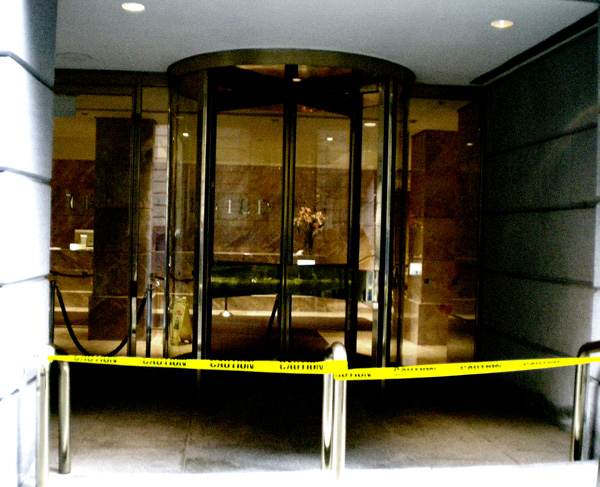
Angel investor and iTulip.com founder
Eric Janszen contributed to this month’s Forum, “How to Save
Capitalism: Fundamental fixes for a collapsing
system,” and wrote “The
Next Bubble: Priming the markets for tomorrow’s big
crash” in the February 2008 Harper’s.
Rafil Kroll-Zaidi interviewed Janszen via email; answers have been edited for
length and clarity.
1. Is the Dow still inflated?
It is. My Dow target since 2006 has been around 5,000. Here’s why: The
impact on the stock market of the 2003–2007 monetary and fiscal
reflation was
similar to that of the 1933–1937 reflation–except that this most recent
reflation was enhanced by real estate asset-price inflation. Sure,
by 1937, the stock market had nominally recovered 80 percent of what
it lost between 1929 to 1933. But in real, inflation-adjusted terms,
it recovered only 50 percent of what it lost.
Today, all of the pricing power that was temporarily injected into the
economy with the credit expansion is running in reverse, with
across-the-board debt deflation. Soon the dollar will resume its
decline relative to commodities (although not currencies) increasing
food and energy inflation pressures in the United States, even as
unemployment rises and wages deflate.
2. What can we expect from federal intervention?
The government has been trying to manage the debt deflation for over a
year, to no avail. The markets are “pricing in” the structural problems
of the banking system and financial markets–problems, as I said, that
cannot be addressed with ad-hoc and marginal national policies. The
entire global financial and monetary system has to be overhauled. This
will require immediate and unprecedented cooperation among governments
and institutions. But America lacks the global political leadership
needed to drive the process.
Time is short. The financial-markets crisis is now spilling over into
the real economy. Soon unemployment and other hardships will limit the
ability of governments to sell a global bailout package. This is how
the first great era of globalism degenerated into political chaos in
the 1930s.
The nationalization of the U.S. banking system is a bold step. The
markets are pleased, as has been the pattern for government
interventions in years past: when interventions are promised, the
markets crash up; when the interventions are not delivered, the
markets crash down. When the interventions vastly exceed expectations, as
with the agreement among governments in the U.S., the U.K., and
Europe to purchase shares in leading banks–nationalization in all but
name–the stock markets react with manic enthusiasm.
Certainly short-term risks to investors have declined. The markets
correctly understand that a functioning credit system is a
prerequisite for a modern economy. But getting the credit system
working again is like restarting a heart-attack victim’s heart. The
underlying cause still has to be addressed, and that takes years, and
other organs may fail while the patient is out.

3. It seems like the whole finance economy was Long-Term Capital
Management writ large: basically no one, not even regulators,
appreciated just how precarious it all was. How do we create a stable
regulatory structure?
The decline in regulation is a symptom of FIRE economy interests
(Finance, Insurance, and Real Estate) taking control of the political
machinery to increase profitability. But the profitability of the
credit industry was a side effect of interest rates falling (after the
Volcker Fed raised them to 20 percent). The incursion of the credit
industry into every aspect of American life–college tuition, health
care–was the result. But it’s worse than that. Manufacturing was
financialized. Take the auto industry–a finance manager at one of
the Big Three automakers told me, “We used to be a car company that
sold financing on the side. Now we are a bank that makes cars.” Look
at GM stock in recent days. It’s gotten hammered worse than during the
Great Depression, not only because of a coming loss in production
profitability but also because of the loss in profits from credit operations that
had become such a large part of their operating profits. The
regulators have to start over.
4. There have been warnings about how precarious it is for the $63
trillion credit-derivatives market to be bigger than the “world
economy.” What are people talking about when they bring up this
figure?
Credit-default swaps (CDSs) have been described as insurance policies
taken out between two parties. One party agrees to insure against the
default of a bond; the other party agrees either to pay out the
insured amount if the default happens during the term of the
contract or to keep the premium if it doesn’t. But CDSs are not
exactly like insurance policies–you do not have to own the asset in
order to take out insurance against it. So the CDS market is like
thousands of gamblers taking out hundreds of fire-insurance policies
of various terms–say, averaging five years–against hundreds of
houses. The total value of the insurance premiums of all of the
contacts may be $4 trillion (known as the gross market-replacement
value) while the total liability of all of the counterparties may be
$63 trillion (notional value) if all of the houses were to burn down.
The gigantic notional value of CDS market is often covered by
financial journalists with alarm. But the chances that all of the
houses are going to burn down in five years is close to zero. The
actual liability is somewhere between the gross replacement value of
$4 trillion and the notional value of $63 trillion.
If the “statistically correct” thing happens and only one of the several hundred
houses burns down in five years, then the total amount that all the
counterparties owe together is manageable. But if many of the CDS
contract writers are using the same or similar risk models and they
happen to be substantially off, then the total cost of the insurance
payouts may exceed the insurers’ ability to pay. The insurers will be
forced to default on the default insurance.
The risks are: 1) that a few such defaults will lead to others,
causing a panic; 2) that in a panic that the CDS market cannot be
bailed out by the Fed because the market is based on of thousands of
handwritten contracts enforced by novation,
the weakest form of contract settlement–which means there is no central
clearinghouse where parties can be brought together to work out problems; and 3)
that there is a considerable concentration of CDS liabilities among a
small number of financial firms. That is why Bear Stearns, for
example, was bailed out, and why Lehman should have been bailed out,
from the perspective of financial system stability.
5. How much worse will it get, and has anyone been able to beat this market?
It happens like this:
- the dollar, declining;
- import prices, rising;
- goods prices, flat to rising;
- wages, falling;
- asset prices (stocks, bonds, real estate), falling;
- long-term interest rates, low but rising;
- short-term interest rates, low but flat to falling.
The probable outcome will be an inflationary recession or an
inflationary depression–a toxic and complex mix of asset-price
deflation, wage deflation, and energy-price inflation that will have
an impact on food prices.
I don’t think most Americans understand just how much trouble the
country is in. We are backing ourselves into a corner. Our debt-laden
economy is highly sensitive to increases in long-term interest rates,
and those since 2003 have become largely determined by foreign capital
inflows from central banks, sovereign wealth funds, and other official
(as opposed to private) sources. If a significant geopolitical shift
away from financial support of the U.S. takes place–due to, say, military
conflict between U.S. creditors, or perhaps due to rising economic and
financial crisis at home–the source of those inflows may quickly dry
up. One reasonable estimate I read forecasts a 2 percent increase in
the ten-year Treasury bond per year that inflows stop and holdings
merely remain constant. That will tend to increase mortgage rates and
slow the U.S. housing market and economy further.
As the economy contracts, the inexorable logic of the American
political economy is to increase protectionist and unilateral
measures, as if the United States were still a net creditor as in the
late 1970s. If such policies are pursued (which caused the world trade
negotiations to collapse earlier this year) the results will be
disastrous for America: the current orderly diversification from the
dollar may become disorderly.
As to beating the market–members of iTulip.com moved from stocks to
cash starting at the end of 2007 and have continued to buy gold since
2001. Some of our members have purchased negative index funds such as
SRS and have done
well.
6. Who should go to jail?
Many will go to jail, but I’ll wait for the hearings before I offer a judgment.



